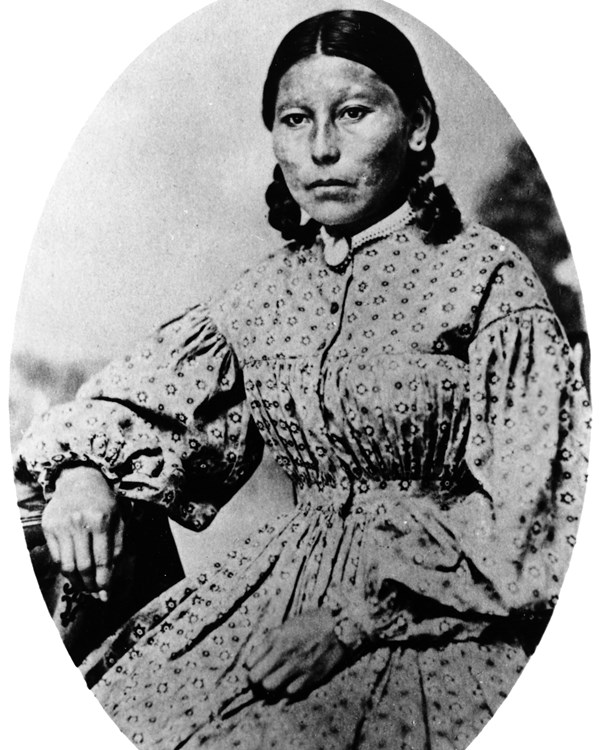Last updated: March 15, 2024
Person
Amache Ochinee Prowers

History Colorado
Ameohtse’e (Amache/Walking Woman) was the daughter of O’kenehe (Ochinee/One-Eye), a prominent Cheyenne Chief who was murdered during the Sand Creek Massacre.
In 1861 Amache married John Prowers, who had come west to work with William Bent at Bent’s New Fort.
Her father helped negotiate a treaty between the United States and the Cheyenne, and Arapaho Tribes to safely camp along Sand Creek during the winter of 1864–1865. At that time, he met with the Territorial Governor, John Evans. Colonel John Chivington certified that her father was a man of good character and a "friendly Indian." Before the attack, the Prowers family, including Amache, were held hostage to prevent them from warning those at Sand Creek of the eminent attack.
In 1865, the Treaties of the Little Arkansas compensated some tribal members that lost family members at Sand Creek with 160-acre land allotments; as a result, Amache, her sisters, and mother were given land grants along the Arkansas River. John and Amache worked together in their business and personal pursuits and settled along the Santa Fe Trail in Boggsville, Colorado in 1867. They lived in a large adobe house, where they raised nine children who were familiar with the cultures of people of European and Native American heritage. Although she always spoke English at home, she taught her children words of the Cheyenne language. She maintained Cheyenne traditions among her family. Amache's mother also taught her grandchildren of the ways of the Cheyenne people. During this time, she was also married to John Prowers and lived with him on a nearby farm. As Prowers purchased land allotments from other Sand Creek survivors and descendants, including Julia Bent, their ranch grew along the Arkansas River.
Amache helped run her family's cattle ranch, where her husband was believed to have brought the first Hereford cattle into Colorado. He began buying cattle in 1862 and was considered the first and largest rancher in the area. By 1881, they had 15,000 head of cattle. Following the death of John Prowers in 1884, Amache moved to Boston in 1890 with her second husband, Daniel Keesee.
Over a generation after her death, her name was suggested for a postal station to reduce confusion between the Granada Relocation Center site and the town of Granada. Incarcerated individuals embraced the camp’s unofficial name, often referring to themselves as Amacheans. The connection between the incarceration site and the Cheyenne goes beyond a name; the land on which the camp was situated is part of ceded treaty lands of the Cheyenne, Arapaho, Kiowa, and Comanche. These lands were also used for trade and traditional gatherings by other Tribes and are still significant to Indigenous traditions.
